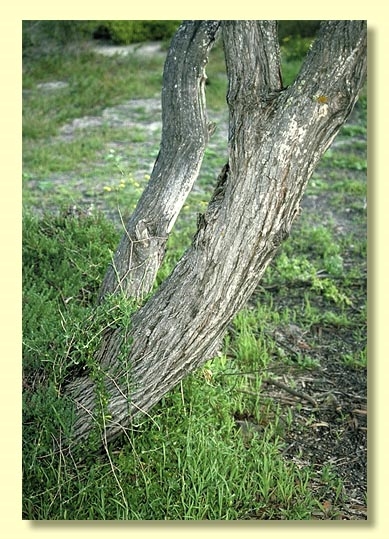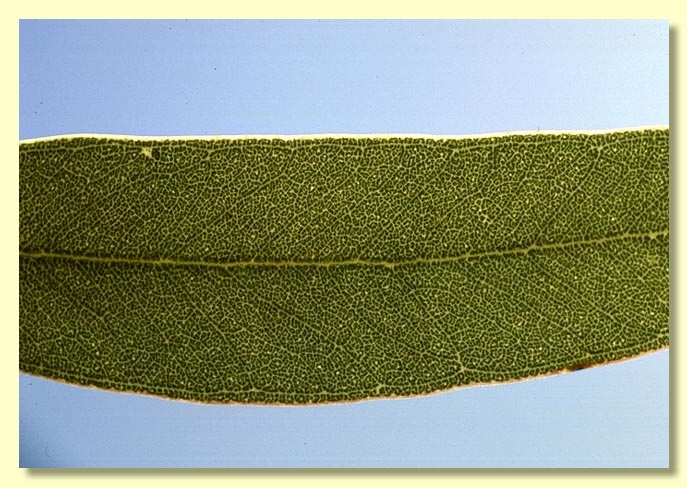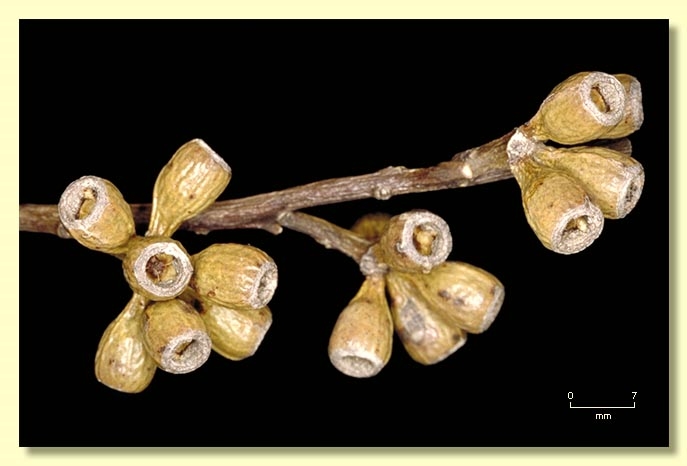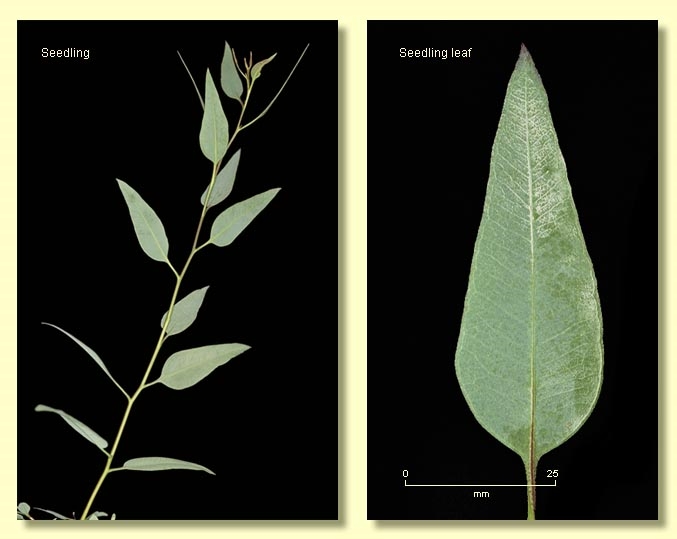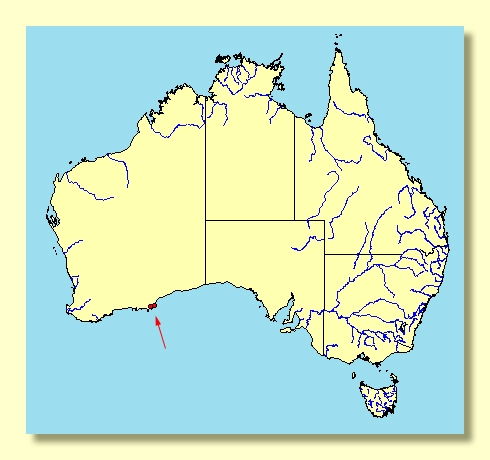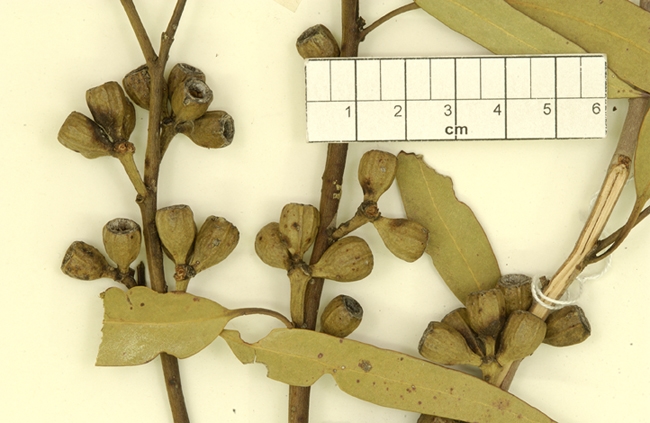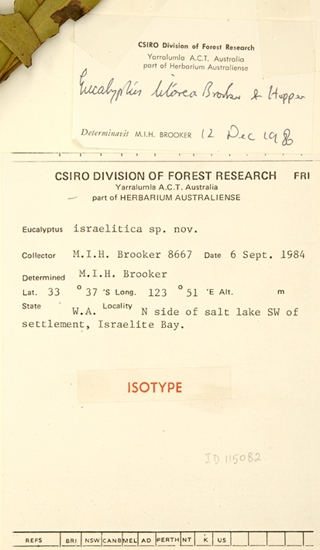Eucalyptus | Symphyomyrtus | Dumaria | Rigentes
Euclid - Online edition
Eucalyptus litorea
Bark rough, hard, grey, fissured, over most or all of trunks, smooth grey above.
Branchlets with sparse pale small pith oil glands (sometimes absent or hard to find).
Juvenile growth (coppice or field seedlings to 50 cm): stems rounded in cross-section; juvenile leaves always petiolate, alternate, ovate, 3.5–7.5 cm long, 2–4 cm wide, greyish green.
Adult leaves alternate, petioles 1–2 cm long; blade lanceolate, 5.5–12 cm long, 0.8–2.5 cm wide, base tapering to petiole, margin entire, apex pointed, concolorous, glossy, green, side-veins greater than 45° to midrib, reticulation dense, erose, intramarginal vein close to margin, oil glands intersectional or apparently absent.
Inflorescence axillary unbranched, peduncles 0.6–1.2 cm long, buds 7 per umbel, sessile to shortly pedicellate (pedicels 0–0.3 cm long). Mature buds ovoid to fusiform (c. 1.1 cm long, 0.4–0.5 cm wide), longitudinally striate, scar present, operculum conical to stoutly beaked (0.5–0.6 cm long), stamens inflexed, anthers cuboid to wedge-shaped, versatile, dorsifixed, dehiscing by longitudinal slits, style long and straight, stigma blunt, locules 3, the placentae each with 4 vertical rows of ovules. Flowers white.
Fruit sessile to shortly pedicellate (pedicels 0–0.4 cm long), cylindrical or barrel-shaped, faintly ribbed longitudinally, 0.8–1 cm long, 0.6–0.8 cm wide, disc descending vertically, valves 3, enclosed.
Seeds brown, 1.5–3 mm long, flattened-pyramidal to flattened-ovoid, dorsal surface shallowly but conspicuously reticulate, ventral surface ridged, narrow marginal flange more prominent on one side of seed, hilum ventral/terminal.
Cultivated seedlings (measured at node 10): cotyledons reniform; stems rounded or square in cross-section; leaves always petiolate, opposite for 3 or 4 nodes then alternate, lanceolate, 6–7.5 cm long, 2–2.5 cm wide, dull, grey-green.
Flowering time unknown.
The obvious salt tolerance may make E. litorea useful in salinity reclamation.
A mallee endemic to Western Australia, restricted to one locality, Israelite Bay, on the western side of the Great Australian Bight, although it may be more widespread in this poorly known area. Its habitat is sand dunes around coastal salt lakes. The bark is rough, hard and longitudinally fissured. The adult leaves are slightly glossy, green.
Eucalyptus litorea belongs in Eucalyptus subgenus Symphyomyrtus section Dumaria because the buds have two opercula, stamens are strongly inflexed, ovules are in 4 rows on the placentae and cotyledons are reniform. E. litorea is closely related to only two other species—E. rigens and E. famelica—both of which occur west of its distribution. Together the three species form series Rigentes, further characterised by the brown flattened-pyramidal seed with a partial marginal flange and the branchlets have sparse clear pith oil glands. The species of series Rigentes might be confused with series Incrassatae, which has black pyramidal seeds and with series Furfuraceae (e.g. E. scyphocalyx), which has flat, ventrally scurfy seeds.
E. litorea with seven-flowered inflorescences clearly differs from the three-flowered E. rigens of salt lake country north of Esperance and which has larger more robust fruit. It is distinguished from the seven-budded E. famelica by the rough bark and beaked buds compared with the blunt opercula of E. famelica.


